Toyota GR Yaris (Toyota Gazoo Racing)
Subcompact HatchbackProduct Gallery
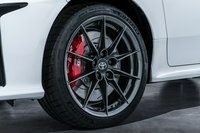
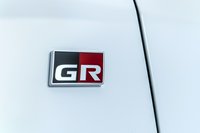

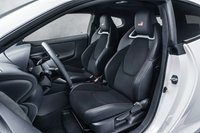
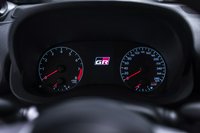



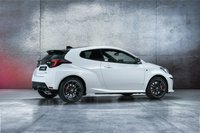

Product Overview
The new GR Yaris is a performance car in subcompact package. Born from Toyota's title-winning experience in the World Rally Championship, it inherits the design and engineering skills of TOYOTA GAZOO Racing. GR Yaris is Toyota's first true all-wheel drive, homologated model for World Rally Championship since the end of production of the Celica GT-FOUR in 1999.
GR Yaris features a lower roof line for lower drag. The new 1.6L turbocharged engine is positioned further back towards the center of the car, and the battery is relocated in the trunk (boot). These changes improve the weight distribution and hence handling, stability, and responsiveness.
The body of GR Yaris is made from lightweight materials such as carbon fiber polymer and aluminium, while the combination of two platforms (TNGA: GA-B that is shared with the Yaris hatchback in the front, and TNGA: GA-C that is used by larger vehicles such as the Prius and Corolla in the rear) widens the rear track, providing improved high-speed stability. It also allows for double-wishbone suspensions to be installed there. The car is 91mm lower than the base Yaris hatchback.
Last but not least, the GR Yaris features Toyota's new GR-FOUR four-wheel drive system. A high-response coupling distributes torque between the front and rear axles. As an option, two Torsen limited-slip differentials in the two axles further manage the split of power between the left and right wheels. The system also uses slightly different gear ratios for the front and rear axles, allowing for a theoretical range of 100:0 (pure FWD) and 0:100 (pure RWD) power split.
Ratings
What we found
Pros
- Powerful four-wheel drive system
- Fantastic low-speed ride
Cons
- Nothing in particular
What external reviewers found
External score 80%
Pros
- Superb infotainment system
- Excellent handling
- Impressive handling
- Spacious and fun to drive
Cons
- Lack of practicality
- Lacklustre rear-end dynamics
- Not as powerful as some rivals
- No two-wheel drive option
- Not the most fun to drive
- Nothing in particular
Your rating:
12345678910
?/10
Price Comparison
As associates of the merchants above, we earn a commission when you make a purchase using the supplied links.
Specifications
[{"Ft":"Chassis","Fn":"Brakes | Front","Fv":"Ventilated disc 356mm"},{"Ft":"Chassis","Fn":"Brakes | Rear","Fv":"297mm"},{"Ft":"Chassis","Fn":"Suspension | Front","Fv":"MacPherson"},{"Ft":"Chassis","Fn":"Suspension | Rear","Fv":"Double wishbone"},{"Ft":"Chassis","Fn":"Tire Size","Fv":"225/40 R18"},{"Ft":"Chassis","Fn":"Turning Circle","Fv":"10.8 m"},{"Ft":"Construction","Fn":"Platform","Fv":"TNGA: GA-B (front) / TNGA: GA-C (rear)"},{"Ft":"Dimensions","Fn":"Size | Height","Fv":"1460 mm"},{"Ft":"Dimensions","Fn":"Size | Length","Fv":"3995 mm"},{"Ft":"Dimensions","Fn":"Size | Width","Fv":"1805 mm"},{"Ft":"Dimensions","Fn":"Weight","Fv":"1280 kg"},{"Ft":"Dimensions","Fn":"Wheelbase","Fv":"2558 mm"},{"Ft":"Powertrain","Fn":"Engine | Displacement","Fv":"1.6 L"},{"Ft":"Powertrain","Fn":"Engine | Power","Fv":"261 DIN hp"},{"Ft":"Powertrain","Fn":"Engine | Torque","Fv":"360 Nm"},{"Ft":"Powertrain","Fn":"Engine | Type","Fv":"Inline-3 turbocharged G16E-GTS"},{"Ft":"Powertrain","Fn":"Transmission | Gears","Fv":"6-speed"},{"Ft":"Powertrain","Fn":"Transmission | Type","Fv":"Manual"},{"Ft":"Production","Fn":"Debut","Fv":"2020 Tokyo Auto Salon"},{"Ft":"Production","Fn":"Made In","Fv":"Japan (Toyota City)"}]
External Reviews
autocar[1]
Reviewer score 82% (normalized by Neofiliac)Three-cylinder engine sounds vocally meek-and-mild at first; a bit like an angry Daihatsu Charade with a loud-hailer. But once you’ve discovered how keenly it responds to throttle inputs, how indefatigably boosty it feels through the mid-range, and how freely it revs beyond 5000rpm. I’d swear it feels every bit as potent as early Subaru Impreza Turbos did, only without the laggy pause for intake of breath of the old Scoob.
Pros
- Powerful turbocharged engine
- Punchy mid-range
- Impressive handling
Cons
- Nothing in particular
autoexpress[2]
Reviewer score 72% (normalized by Neofiliac), the Ford's sound is more authentic. The three-pot engine has a bassy rumble that in Sport or Track is accompanied by some characterful pops from the exhaust on gearchanges. The shift itself is lighter than the Toyota's, but just as engaging. On the road both cars are uncompromising, but they also offer the quality of damping that means you can really commit to corners.
Pros
- Spacious and fun to drive
- Spacious boot space
- Decent infotainment tech
Cons
- Lack of practicality
- No two-wheel drive option
carmagazine[3]
Reviewer score 80% (normalized by Neofiliac)The Yaris GR comes in at 1280kg, giving a power to weight ratio of 201bhp per tonne. Maximum power occurs at 6500rpm and although the engine's flexibility means most b-road jaunts can be done at far lower revs, there is more than enough reward for stretching it towards the red line. Steering feel from the slightly too high driving position isn't remarkable, but by the current standards of electric power steering it does a decent job.
Pros
- Punchy turbocharged engine
- Impressive handling
- Excellent handling
Cons
- Lacklustre rear-end dynamics
carwow[4]
Reviewer score 87% (normalized by Neofiliac)The new Toyota GR Yaris is a seriously menacing little hot hatch. The standard car's grumpy, downturned grille has been ditched in favour of a huge, barn-door-like opening in the front bumper. You also get a unique three-door layout instead of the standard Yaris' boxier five-door shape. Under the bonnet – but tucked as far back as possible for better weight distribution – sits a 1.6-litre three-cylinder turbocharged petrol engine pumping out 261hp.
Pros
- Powerful turbo engine
- Superb infotainment system
- Lots of standard equipment
Cons
- Nothing in particular
Also Check
References
<
>
x